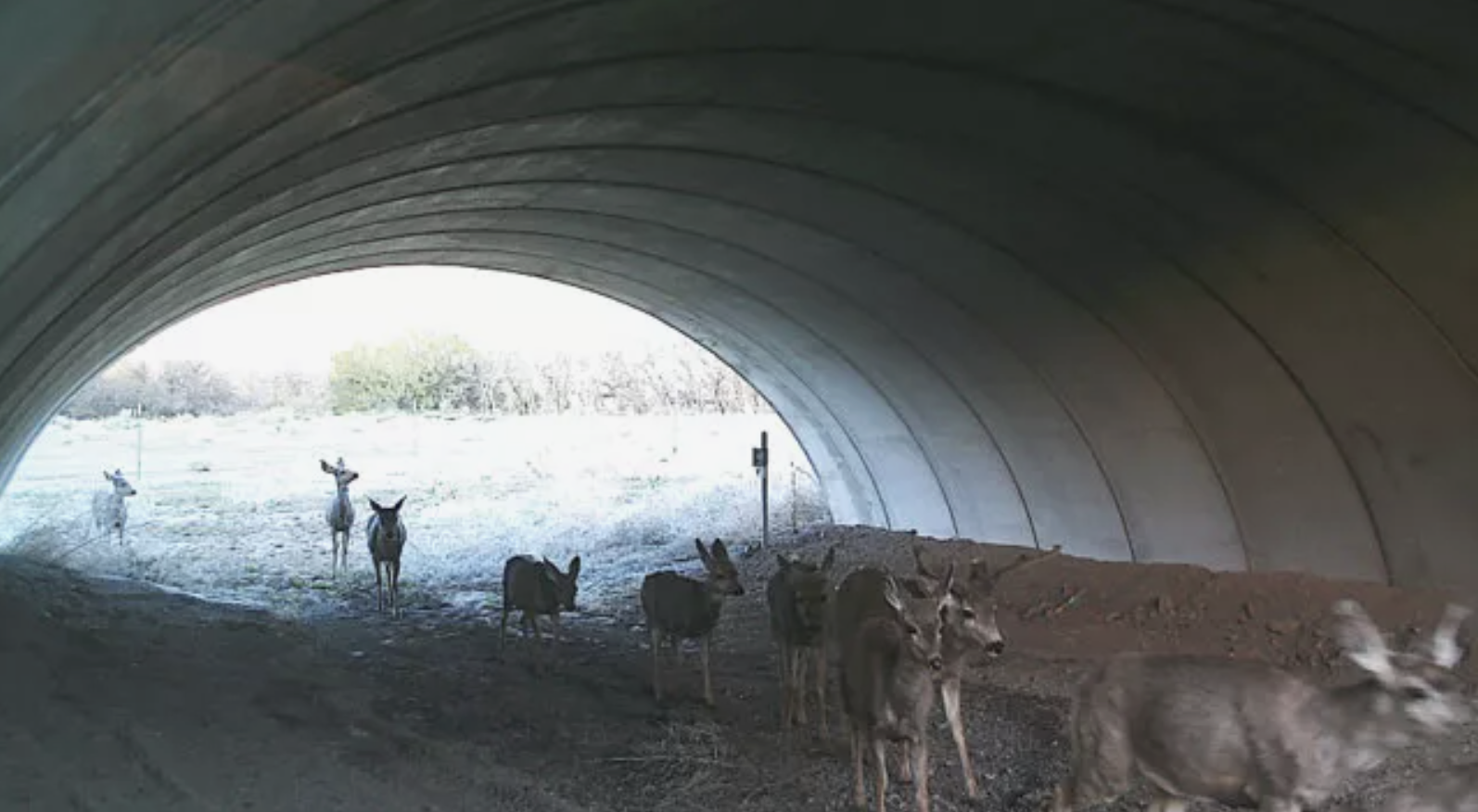
Protecting Wildlife
Bend to Suttle Lake Wildlife Passage Initiative
Collision danger along Oregon’s roadways
The Oregon Department of Transportation records thousands of wildlife-vehicle collisions statewide every year and estimates are that twice as many go unreported. The result is injury, loss of life, and millions of dollars in property damage annually.
According to State Farm’s 2021 annual collision data analysis, motorists in Oregon are more likely to hit wildlife on our public roadways than in any other west coast state.
Oregon lags far behind its Western state counterparts in developing and implementing solutions. Colorado has constructed 69 dedicated wildlife passage structures for large animals on public highways. California and Utah have 50 each. Washington has 30. Nevada has 23. Wyoming has 20. Oregon has five such structures.
It's time Oregon steps up its efforts.
Highway 20 between Bend and Suttle Lake has the highest densities of deer and elk vehicle collisions in the entire state. It is increasingly becoming a more significant barrier to wildlife movement. The daily number of cars traveling along this highway segment averages 12,000 vehicles; highways become an almost complete barrier to wildlife movement with 25,000 vehicle trips per day.
The consequences for wildlife are huge.
Central Oregon’s high rate of wildlife-vehicle collisions makes up almost 30% of known mule deer deaths in the region. In Deschutes County, Oregon Department of Fish and Wildlife recently reported that mule deer herds have declined by 56% since 2004. The impacts to countless other wildlife are often under-reported or not captured, leaving the impact hard to quantify.
Developing and implementing proactive solutions is essential to ensuring we retain the native wildlife in our region’s rich natural environment. But we must act before it’s too late.
The vast majority of Oregonians believe action is needed. In a recent poll conducted by the Pew Charitable Trust, 86% of Oregonians agreed that we should protect wildlife migration routes, and 72% of Central and Eastern Oregon residents supported increasing public funding for project implementation.
A goal to improve wildlife passage & motorist safety
The Bend to Suttle Lake Wildlife Passage Initiative (B2S) study area includes 35 miles of Highway 20 between Bend and Suttle Lake. Oregon Department of Transportation carcass collection data, GPS collaring data for deer and elk, and the recently completed Oregon Connectivity Assessment and Mapping Project have identified sites along this corridor as a priority for wildlife passage, particularly for mule deer and elk.
To address the growing safety concern for wildlife and motorists along Hwy 20, state and federal agencies, tribal partners, nonprofits, landowners, and institutions formed B2S. Our goal is to improve wildlife passage and motorist safety by building wildlife crossing structures. This broad partnership brings together the expertise, relationships, and regulatory authority essential to success.
By addressing priority wildlife crossing sites stepwise, B2S will ensure the necessary resources are secured for full project implementation at each location.
The project has four main phases:
Phase One: Complete a feasibility study to identify potential multi-species crossing sites. Thanks to the generous support of foundations, Oregon Conservation and Recreation Fund, state agencies, and the community in 2023, the feasibility study is currently underway. It will be completed in the summer of 2024.
Phase Two: Complete engineering and design for the highest priority wildlife crossing locations, a process led by the Oregon Department of Transportation. Completing engineering and design is a necessary precursor to project construction and will include robust engagement with corridor communities and the public.
Phase Three: On-the-ground construction of high-priority wildlife crossings. Perhaps the most exciting phase, constructing the wildlife crossings may take a year or more to complete.
Phase Four: Monitor and evaluate the efficacy of wildlife crossing design in improving wildlife and motorist safety along Highway 20 between Bend and Suttle Lake. Often overlooked, monitoring is key to ensuring that crossing structures have their intended effect and can help inform other projects across the state and beyond.
Project implementation for the Bend to Suttle Lake Wildlife Passage Initiative is expected in the next three to five years, between 2027 and 2029.
Wildlife crossing structures are a long-term solution that reduces barriers to wildlife, reconnects fragmented habitats, and improves motorist safety.
A wildlife underpass on US Route 550 in Colorado: Colorado Dept. of Transportation
We need your help!
Interested in getting involved? Reach out to Jeremy Austin, Central Oregon LandWatch’s Wildlands & Water Program Manager at jeremy@colw.org.



